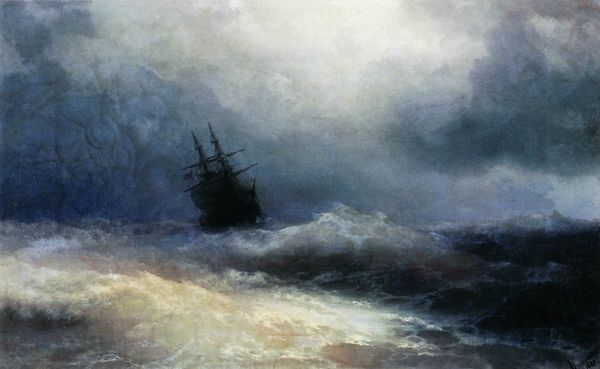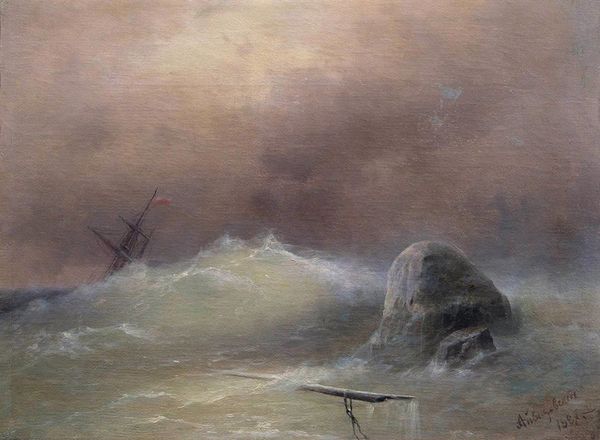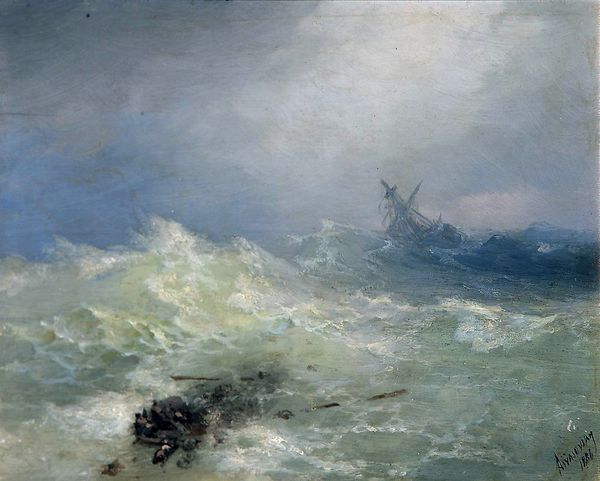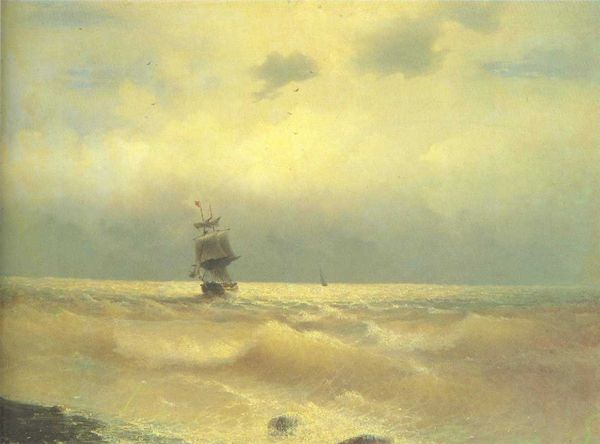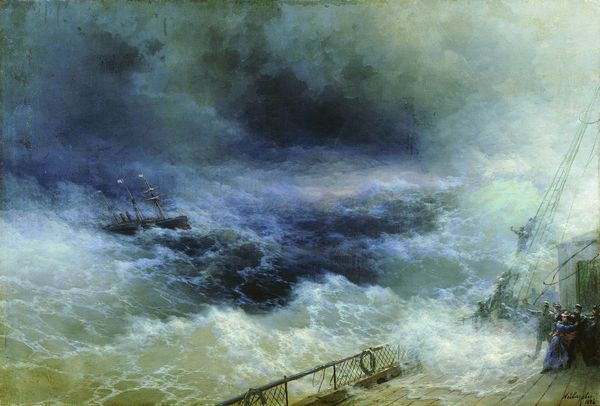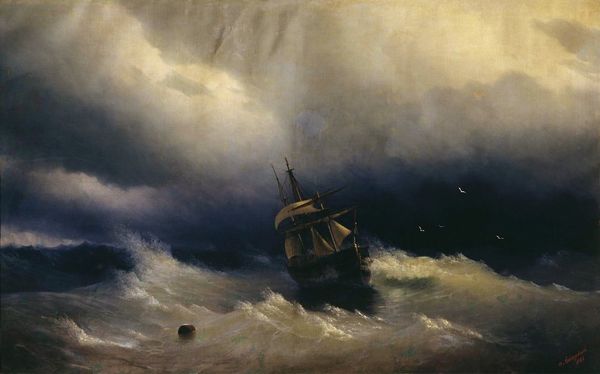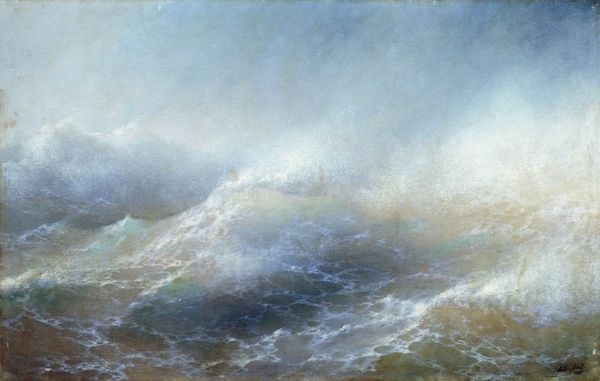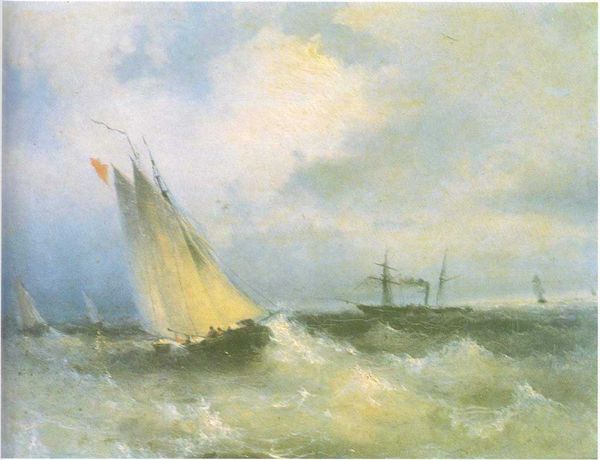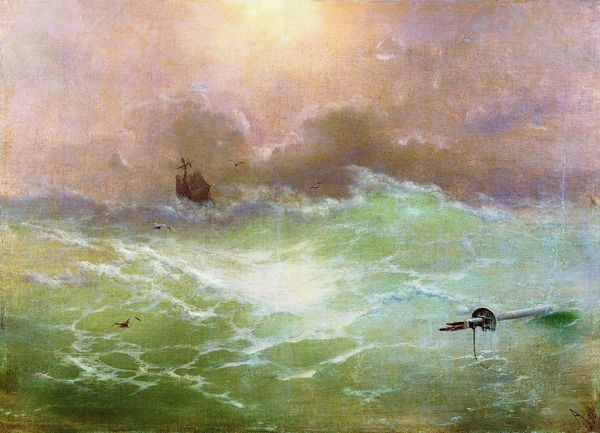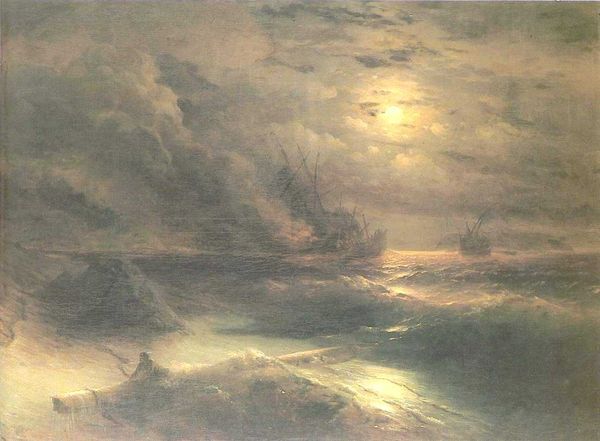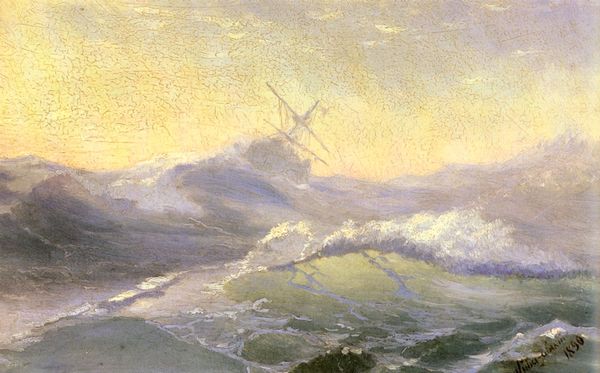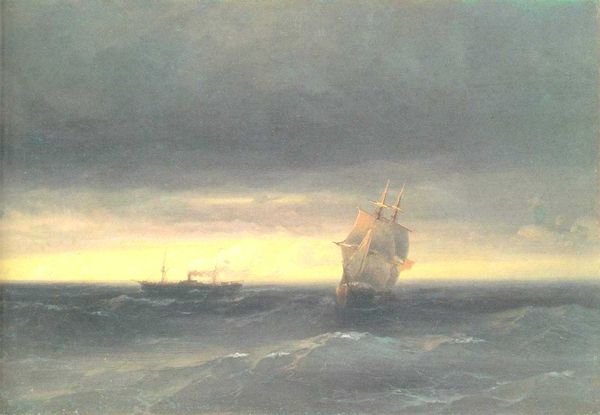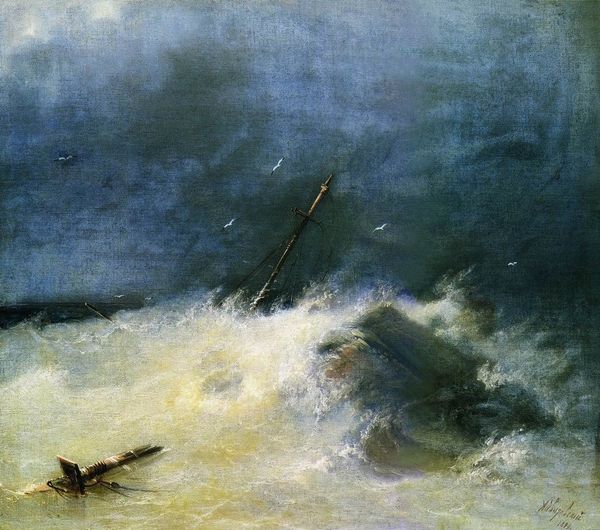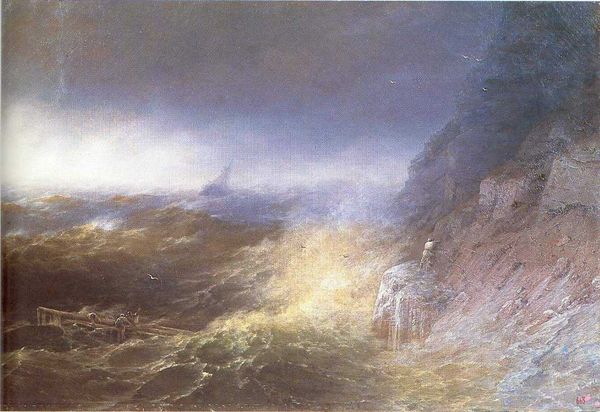
Dimensions: 118 x 150 cm
Copyright: Public domain
Curator: This painting before us is Ivan Aivazovsky's "Tempest by Coast of Nice," created in 1885. It's an oil painting that really captures the raw power of the sea. Editor: My first thought? It's turbulent! The subdued palette of grays and browns really conveys the threatening atmosphere. It's the kind of scene that makes you instinctively want to find shelter. Curator: Absolutely, and it's vital to consider Aivazovsky's broader artistic output. He was, after all, the principal artist of the Russian Navy, and this aligns with his extensive exploration of maritime themes and a reflection of the historical context in which naval power held significance. Yet it evokes deeper questions about human vulnerability against nature's power, about the societal implications of dependence on an element that can be both life-giving and destructive. Editor: Indeed. Thinking about it from an art historical perspective, this piece falls squarely within the tradition of Romantic landscape painting. But instead of the sublime beauty often depicted, we get something far more ominous. It really shows how social attitudes shifted to appreciate not only tranquility but also raw nature. The sea wasn't just picturesque; it was also a force that determined fates. Curator: That's a salient point. Consider also the lack of explicit narrative. While some figures struggle aboard the distant vessel, we're denied easy answers. We must ask: Who are they? What historical forces conspired to bring them here, into conflict with this unrelenting force of nature? We can interpret the work through various cultural studies lenses to reveal underlying power dynamics. Editor: Precisely. The blurred distinction between sea and sky heightens the disorientation. It mirrors the broader social anxieties around industrialization and its impact on the natural world during that time, a changing of the established order. One can only imagine what sort of sociopolitical instability resulted in the ship's ill fortune! Curator: By positioning the human-scaled ship as tiny versus nature's fury, he critiques imperialism and unchecked exploitation, making it quite a politically charged work, wouldn't you say? Editor: Yes, viewing "Tempest by Coast of Nice" allows us to consider Romanticism's evolving role in addressing contemporary anxieties, a shift clearly reflected in its popularity among diverse audiences. Curator: Thank you; that helps contextualize its broader significance, prompting us to ask difficult questions. Editor: Thank you; it highlights how landscape art reveals a more complex sociopolitical discourse than previously believed.
Comments
No comments
Be the first to comment and join the conversation on the ultimate creative platform.
